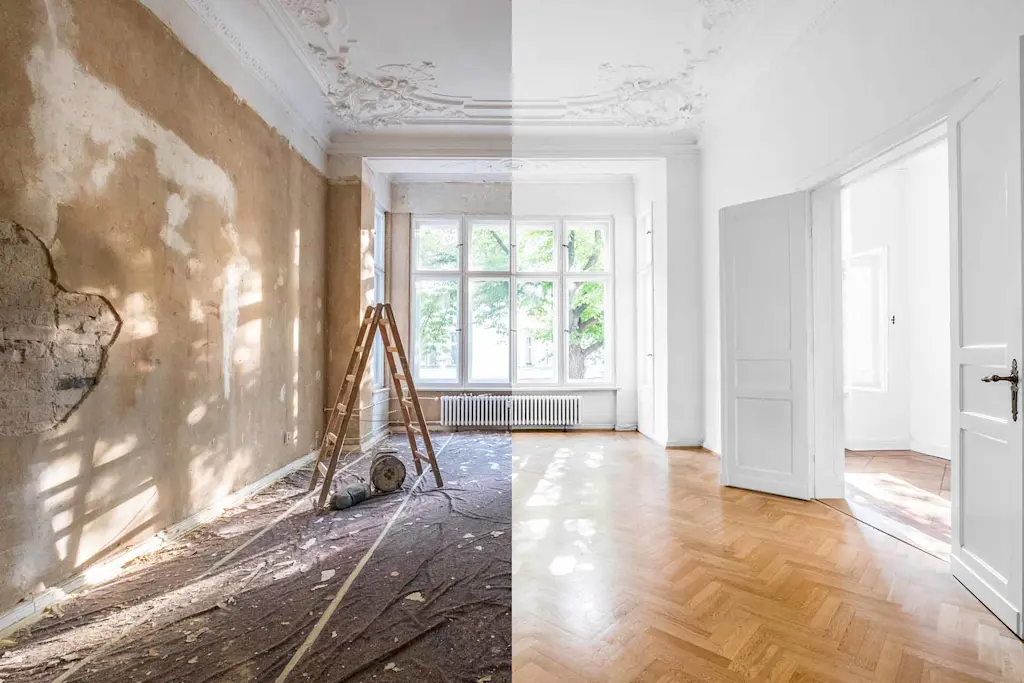

Introduction
Remodeling your entire home is a bold move—one that can significantly enhance your lifestyle, increase your home’s value, and bring a cohesive, updated aesthetic to your living space. But full-home remodeling isn’t just about replacing old with new; it’s about creating a harmonious flow that connects each room and function with intentional design. Whether you’re modernizing a dated home or reimagining a fixer-upper, this guide will walk you through how to plan and execute a comprehensive remodel that feels polished, purposeful, and truly livable.
Chapter 1: Why Flow Matters in Full-Home Remodels
Before picking out paint colors or tearing down walls, it’s essential to understand what makes a remodel work. The keyword? Flow.
What is Flow in Home Design?
Flow refers to how spaces feel connected—visually, functionally, and emotionally. It impacts:
Movement between rooms
Sightlines and lighting consistency
Cohesive materials and design elements
Energy efficiency and comfort
A home that flows well feels more spacious, welcoming, and easier to live in—even if the square footage doesn’t change.
Chapter 2: Set Clear Remodeling Goals
Every successful remodel starts with clarity. Ask yourself:
What is my main motivation? (Modern aesthetics? Better functionality? Resale value?)
Which rooms feel disconnected or awkward?
Are there layout issues I want to resolve?
What is my timeline and budget?
Pro Tip:
Create a mood board or Pinterest collection with looks you love. Seeing your preferences in one place will help you identify common threads and guide your style choices.
Chapter 3: Build a Remodeling Roadmap
Trying to remodel everything at once can be overwhelming. Instead, break the process down into logical stages.
Step 1: Structural or Layout Changes
Start with big-ticket items:
Removing or moving walls
Adding rooms or expanding spaces
Updating plumbing or electrical systems
Step 2: Kitchens and Bathrooms
These rooms offer the highest ROI and tend to be the most used (and the most disruptive during renovations). Knock these out early.
Step 3: Living Areas and Bedrooms
These can often be updated with cosmetic changes like flooring, lighting, and paint.
Step 4: Exterior and Landscaping
Finish with curb appeal: new siding, roofing, walkways, and outdoor living spaces.
Chapter 4: Design for Cohesion
One of the most common remodeling mistakes is making each room feel like a separate project. A cohesive design feels curated and intentional.
Key Elements of Cohesive Design:
Color Palette: Choose 2–3 base colors and 1–2 accent shades to use throughout.
Flooring: Try to maintain consistent flooring across shared spaces.
Lighting Fixtures: Mix it up, but stick to one or two metal finishes.
Trim and Hardware: Keep door handles, cabinet pulls, and moldings similar to unify the look.
Chapter 5: Rethink Layout and Traffic Flow
Remodeling is your chance to fix awkward transitions or cramped spaces.
Questions to Ask:
Do hallways or furniture block natural light?
Is the kitchen easy to access from the dining area?
Do the bedrooms offer enough privacy?
Would an open-plan layout serve your family better?
Consider how you live now—not just how the house was built decades ago.
Chapter 6: Make Smart Choices with Materials
Materials can make or break a remodel. Aim for beauty and function.
Best Practices:
Durability First: Use hardwood, quartz, and tile for longevity.
Mix Textures: Combine wood, stone, and metals for depth.
Eco-Friendly Options: Bamboo, reclaimed wood, and low-VOC paints offer sustainability without sacrificing style.
Future-Proofing: Opt for neutral, timeless finishes that won’t feel dated in 5 years.
Chapter 7: Budget Without Compromising Style
A full-home remodel doesn’t have to be a financial black hole. Here’s how to stretch your dollars:
Money-Saving Tips:
Refinish vs. Replace: Cabinets, floors, and tubs can often be refreshed rather than replaced.
Phased Renovation: Do one floor or section at a time.
DIY What You Can: Painting, demo work, and basic installs can save thousands.
Look for Sales: Buy appliances and materials during seasonal promotions.
Chapter 8: Work With the Right Team
Hiring the right people is just as important as choosing the right materials.
Who You May Need:
Architect (for layout changes)
General contractor
Interior designer
Electrician and plumber
Project manager (for larger homes)
Ask for portfolios, references, and clear contracts. Good communication and a shared vision are essential.
Chapter 9: Don’t Forget the Small Details
It’s easy to focus on the big stuff, but thoughtful details are what make a remodel feel finished and luxurious.
Examples:
Hidden outlets in kitchen drawers
Motion-sensor lighting in hallways
Built-in shelving or window seats
Smart thermostats and integrated sound systems
Decorative trims and crown molding
These little touches elevate the entire home and show you went the extra mile.
Chapter 10: The Finishing Touch—Staging & Styling
Once construction dust settles, it’s time to make your remodeled space feel like home.
Styling Tips:
Add layered lighting (ambient, task, and accent)
Use rugs to define zones in open-plan spaces
Incorporate plants for warmth and texture
Hang art at eye level, not too high
Style shelves with a mix of books, vases, and personal items
Conclusion
A full-home remodel is a journey—and with the right strategy, it can be one of the most rewarding projects you’ll ever tackle. By planning with flow in mind, aligning your design choices, and executing in stages, you’ll create a space that’s not only beautiful, but perfectly suited to your lifestyle. Whether you’re remodeling to stay forever or preparing to sell, turning an outdated house into an outstanding home is always worth the effort.
Recent Posts
- 🌿 Eco-Friendly Holiday Celebrations: 10 Sustainable Ways to Make the Season Special
- Cozy Holidays at Home: 10 Creative Ways to Make This Season Magical Without Traveling
- DIY Holiday Bliss: Easy Projects to Make Your Home Cozy, Warm & Festive
- Holiday Glow-Up: Simple DIY Projects to Transform Your Home into a Festive Wonderland
- The Ultimate DIY Home Remodeling Guide: 30 Transformations You Can Do Without Hiring a Professional
Recent Comments
Categories
- Blog
- Budget-Friendly DIY
- Careers
- Crafts and Hobbies
- Decor and Design
- Design
- Featured Post
- Holiday and Special Occasion Projects
- Home Improvements
- Home remodeling
- Innovation
- Inspiration and Ideas
- Lifestyle
- Outdoor Projects
- Step-by-Step Tutorials
- Technology
- Tips and Tricks
- Tools and Materials
- Travel
- Uncategorised
Search
Recent Post
🌿 Eco-Friendly Holiday Celebrations: 10 Sustainable Ways
- 29 November 2025
- 6 min read
Cozy Holidays at Home: 10 Creative Ways
- 29 November 2025
- 3 min read
DIY Holiday Bliss: Easy Projects to Make
- 28 November 2025
- 6 min read






